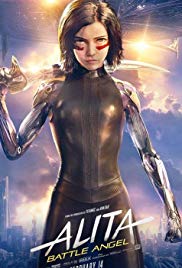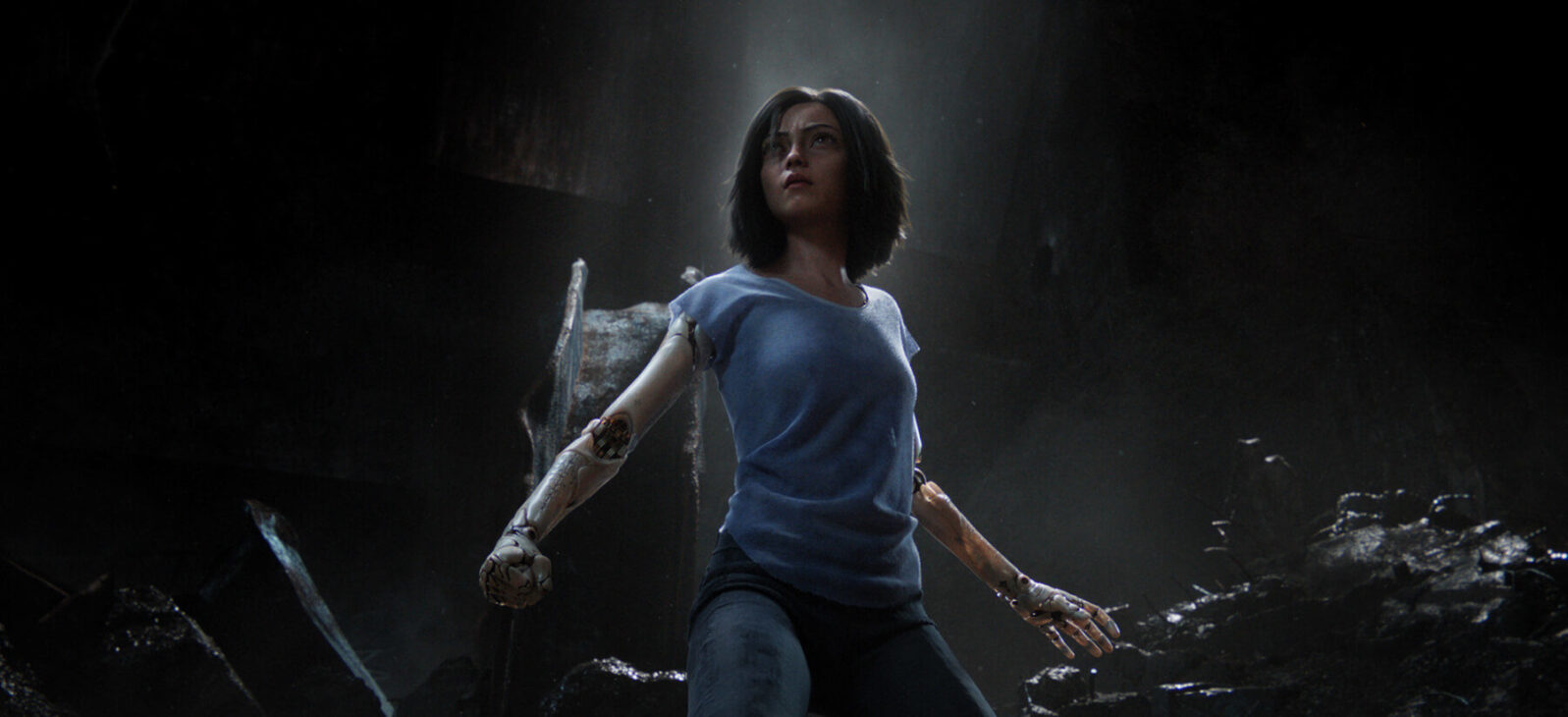Alita: Battle Angel: A Mind Matters Review
If you love anime and felt betrayed by the flop of Ghost, I would highly recommend Alita
Alita: Battle Angel (2019) led the box office this weekend (spoiler: it was the worst President’s Day Weekend box office in 15 years).
For me, the film came out of left field. I had feared that another live action movie based on a classic and well-loved anime cartoon would be as big a disappointment as Ghost In The Shell (2017). The intriguing performance capture technology that digitally captures human movements, bringing a photorealistic Alita into her environment, however, got me curious so I bought a ticket.
From the beginning, the surreal post-apocalyptic sci-fi world of 2600, set three centuries after a great war, was beautiful. A massive floating city towered above the poorer dwellings of a city below. Dystopian future class warfare is a sci-fi staple but, in a strange way, Alita’s visual take was refreshing rather than stale and contrived. Overall, the visual editing was quite beautiful and, for me, really stole the show. For example, creating a photorealistic computer-generated eye is incredibly difficult but Alita succeeded masterfully.
Although the filmmakers have not crossed the uncanny valley by any means, the cyborg Alita was wonderfully incorporated into her environment. Standing next to Christoph Waltz, she flowed into the scene seamlessly, as though to say, “what CGI?” Although some may find the dialogue a bit lackluster (and they have a point), I was more impressed with the film’s commitment to the source material and the anime art form than I was with how confusing some of the dialogue was.
Recommendation: If you love anime and felt betrayed by the flop of Ghost, I would highly recommend Alita. Of all the film adaptations of anime that I have seen, it should certainly make fans most proud. For those of you who are not diehard anime fans, it really comes down to preference. The themes, character archetypes, moral dilemmas, and art styles in anime come from Japanese culture. Look closely enough, and you’ll notice how different those themes and styles can be, at times, from the conventions of western film. Japanese superhero webcomic One Punch Man is a wonderful satire that accentuates the common themes and styles of anime and Alita does a wonderful job of presenting the genre to a western audience.
If you’re a fan of action-packed sci-fi set in a post-apocalyptic world, give Alita a chance and overlook the, at times, gimmicky character development. If that’s not your cup of tea, the action and beautiful photorealism is something you shouldn’t miss.
I had expected the character Alita to be a lethal AI but she is actually a cyborg (human brain, robotic body). I was somewhat taken back by the premise that in her world, humans have been highly augmented by advanced robotic technologies, allowing them to be stronger, faster, and more resilient. Alita herself is special. She belongs to an alien civilization from Mars that nearly wiped out all the major cities on Earth. When she was found in a junk pile, only her human brain and upper torso were recovered. At one point, Alita asks a friend if it bothers him that she is not fully human. To which he replied that she is the most human person he has ever met.
Although it doesn’t strictly feature AI, Alita invites us to ponder what it means to be human. Are we defined by a human brain? Or are there aspects of being human that are not solely associated with the brain? How does personhood change in the absence of a body? I have an easier time believing in a dystopian future in which we augment ourselves through through brain computer interfaces (BCIs) or prosthetics than that we will create conscious free-agent artificial superintelligences. However, cyborgs and robots raise many interesting philosophical questions. Alita offers a fresh perspective on currently trendy AI religiosity.
Cyborgs and cybernetics aren’t all the rage just now because robotic and BCI technologies haven’t made nearly the same kinds of breakthroughs recently that AI and neural networks have. Despite that, it’s nice to see something different from the familiar AI robot flick. Perhaps because cyborgs are different from robots, Alita is hard to rate on the Dogmatism Scale. Sure, it portrays a world dominated by augmented humanity, but that is all it does. Its narrative and artistry are not centered around the emergence of “human 2.0” or the materialism of the human mind. Rather, it’s focused on the story of Alita herself. For this reason, I give it 0/10 for dogma.
Overall, I loved the film. Regardless of what you think about the dialogue, the scenery is beautiful, and the action a joy to watch. Add it to your list for when you have a free afternoon. (2 hrs 2 min)

Adam Nieri, Program Assistant, has interests in philosophy of science and philosophy of mind, and he holds an MA in Science and Religion from Biola University. He has background in social media and marketing, photography/graphic design, IT, and teaching.
Also by Adam Nieri: A Closer Look at Detroit: Become Human, Part I Gaming culture provides a window into our culture’s assumptions about artificial intelligence
Also: If a robot read the news, would you notice a difference?
